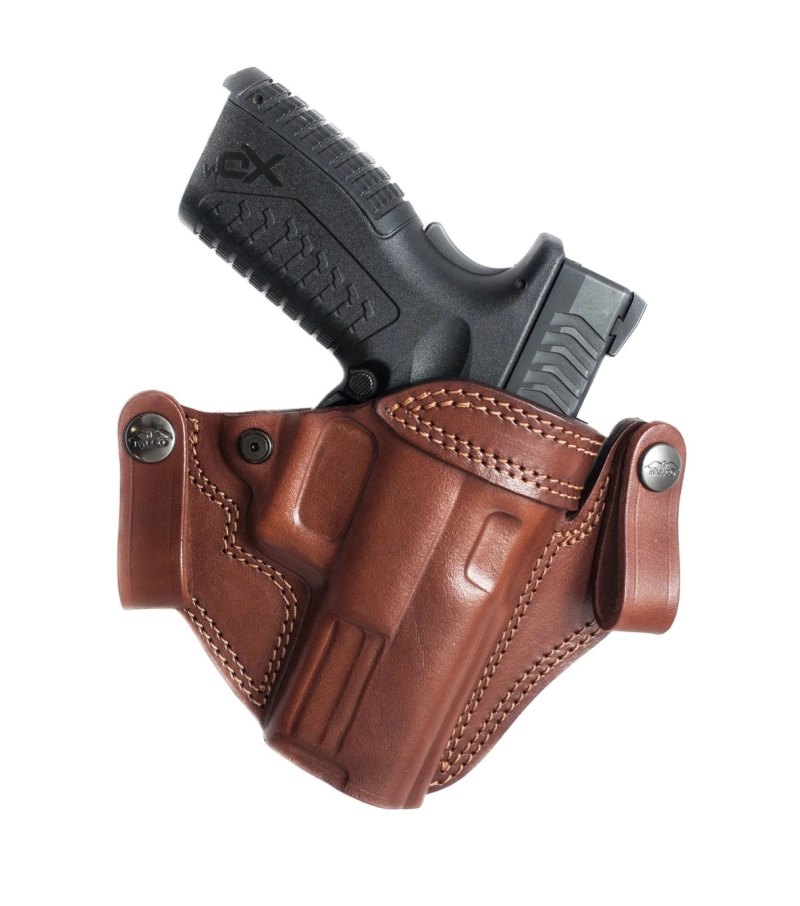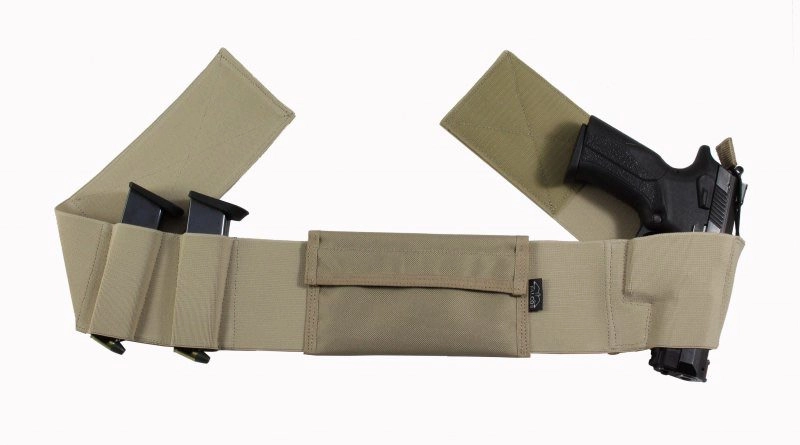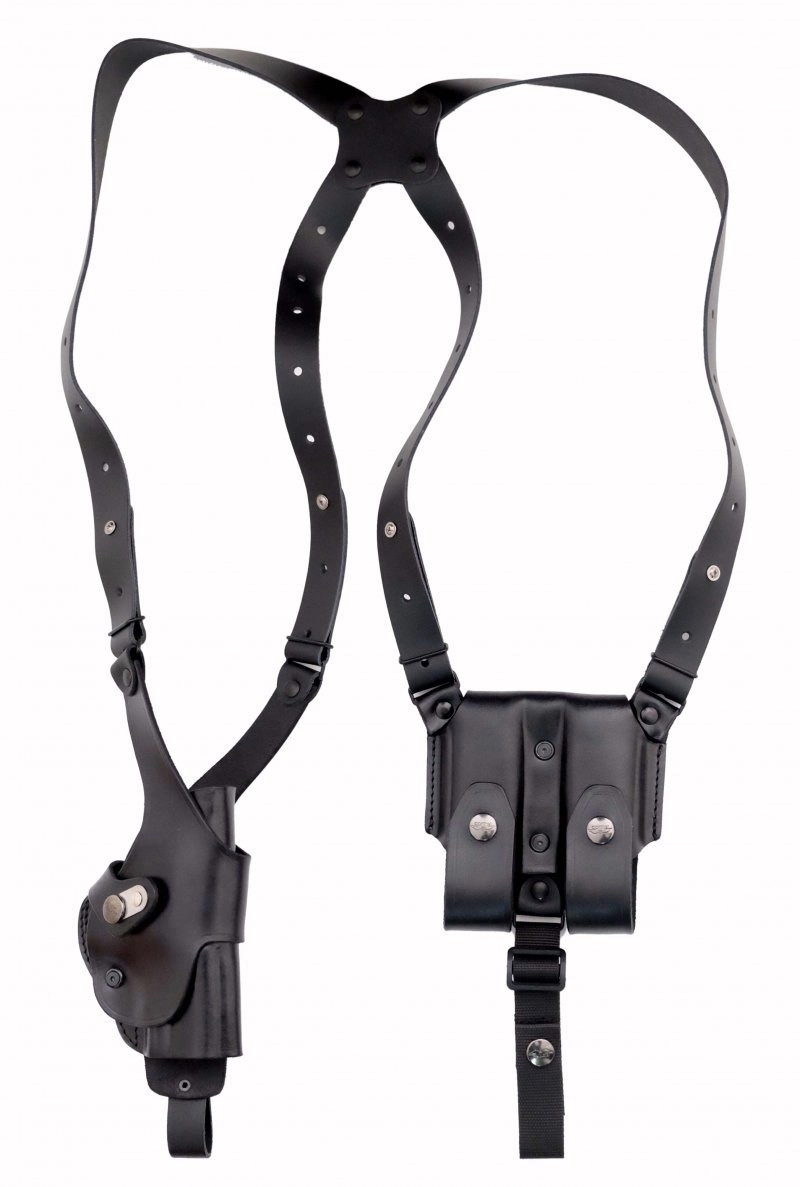What types of gun holsters we produce
Understanding the importance of carrying a gun in a holster and reviewing the purpose of gun carry would give us a better idea of why there are so many types of holsters and materials used for their production. Naturally, personal preferences, types of gun carry and different situations call for wide variety of holster models.
1. Belt IWB Holsters
Inside the waistband (IWB) holsters are your best option if you need to carry your gun concealed whilst wearing a t-shirt and trousers with belt or similar style clothing. The belt would hold the holster against the wearer, keeping it pressed against the body in a stable position and the top clothes would cover the waist area, hiding the holster and gun from the view.

The gun draw is quick and efficient as holster’s vertical position is right on the belly. Once you get the hang of clearing the clothing out the way, the draw speed can be comparable to drawing from an OWB holster.
As guns can be cold, oily, have sharp pointy bits sticking out, a good holster should also have a sweat guard. This would separate the gun from the skin of the wearer, making the holster comfortable to wear. And of course, there are different holster materials to choose from; leather, nylon or kydex.
From the comfort point of view, Nylon is the obvious winner. It’s soft, light and comfortable. It absorbs the body sweat and it is scratch resistant. Our 3D nylon material breathes better and can also be cleaned.
Leather being the traditional choice of material would last you if looked after properly the whole life cycle of a gun itself. Although lacquered, the sweat would change the surface color with time and would develop an individual patina.
Kydex is the least comfortable option as you are wearing pure plastic inside the trousers pressed against your body but on the other hand these holsters would offer you more safety. This is due to the self-locking system. Re-holstering is quick and the holster is sturdy, holding its shape at all times.
IWB holsters can be attached onto belt with steel buckle which can be undone quickly, belt loops or tuckable system (where a t-shirt can be put into trousers).
2. Belt OWB Holsters
Outside the waistband holsters (OWB) are the most popular open carry option. Focused on effective gun draw and safety, this is the best type of holsters to use. Depending on where on the belt you carry your gun suitable holster should be chosen in reflection to that position.
On the side or 3 o’clock carry, is a wear with no angle where the gun is vertical to the body. Hand sits on the gun perfectly, it is within easy reach and the gun draw is fact and effective.
More on the back or kidney wear is at a small angle to the front. The further you go on waistline towards the back, the gun angle increases in order to be ergonomic. This wear option is suitable if wearing a suit or a jacket and the holster with gun can be visible.
Small of the back or rear wear hides the holster and gun even more but it is uncomfortable when seated and completely useless when driving.
Cross draw wear sometimes called the western wear is visible with the gun being long way away from the hand and if the draw is not mastered well, this wear would have many disadvantages. However, it can be used when driving or in seated positions where the gun would be easily accessible.
Because OWB holsters are the most common, they come in wide range of designs and materials. The gun safety is usually ensured by thumb break, safety lock or holster’s retention system. They are attached onto belts by belt loops, steel clips or paddles. The wider the holster the better it sits on the belt.
With OWB holsters, it`s important to have your holster made specifically for your particular gun model. For an effective gun draw you must first find your gun in a correct position, stably sitting in your holster. Much can be lost if your hand doesn`t sit well on the gun the first time, you would lose precious time retrying.

It is important to bear in mind that belly band is like a piece of dress, that’s why its life cycle is much shorter than that of regular holster. On the other hand it is the most comfortable option for gun carry on the body.
4. Shoulder Holsters
Shoulder holsters used to be very trendy way of concealed carry. Then they were replaced by IWB holsters. The reason was comfort and safety as well as shorter, more effective gun draw.
This type of holster is fixed onto a shoulder harness from the top, and onto a belt from the bottom. Despite this two way attachment, there is still a slight movement when the body moves. As gun should be on the body as close and as fixed as possible shoulder holsters are not the best at providing this.
You can have your shoulder holster made from nylon or leather in a gun holster version only. Or the holster can have counterbalance in the form of magazine/ speedloader pocket or a section for accessories.
Shoulder harness needs to spread the weight of the gun and magazines comfortably and it is important to adjust it right on your figure. All shoulder holsters have this tailoring option and they all need to be adjusted after purchase.

5. Anklet Holsters
Good choice for secondary gun carry. These holsters are made from light and comfortable nylon and only small guns are recommended to be worn in such holsters. Gun draw is complicated, slow and needs practicing.
6. Leg Holsters
Leg or tactical holsters are best if you can open carry your gun or you are in a situation that allows it. Basically, the wear is pretty similar to the OWB holster where the gun is in a vertical position, just lower down on the leg. This wear is effective for tactical carry of secondary gun or used when out in the nature and it can be difficult to access your OWB holster due to heavy jacket or Gillet.
These holsters can be made from nylon or plastic. The harder the holster the better.
7. Bags for concealed carry
Bags of concealed carry are the latest trend. They are the answer to today’s life style when you need to have all your personal belongings and important daily items such as keys, wallet, mobile phone etc. altogether in one place with your gun hidden from the view, in a bag not recognized as a gun bag.
These bags are designed for quick gun draw which is important to practice even more than with regular holsters. Every bag has different opening and you wear it on the opposite side to the hand you use the most.
If you are right handed the bag is worn on left side of the body. You would then hold the bag with your left hand and with the right one you would catch the opening strap, pull and draw the gun.
We make these bags from nylon for a tactical look and design materials or leather for more elegant look.
All the types of holsters can be used effectively only if you practice gun draw and get yourself familiar with your gun and your holster. If you change guns frequently you might not get that chance, the same applies to holsters. Do not neglect practicing, it can cause mistakes in critical moments. Practice to be safe.
If you liked our blog, or eventually you can write better about some interesting content, please contact us here. We would be happy to publish it!








